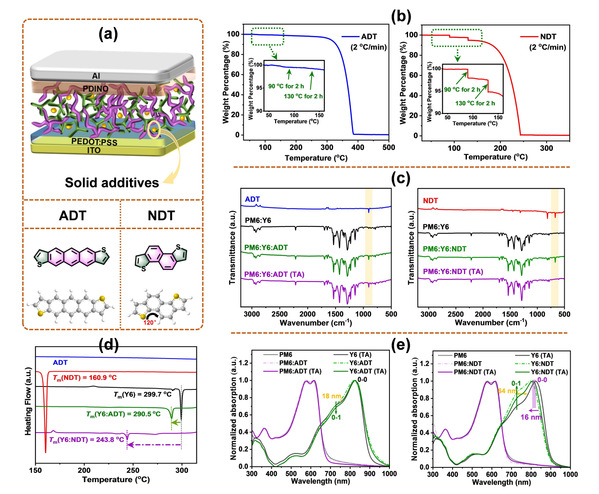Molecular Stacking and Aggregation Optimization of Photoactive Layer through Solid Additive Enables High-Performance Organic Solar Cells
Zhang, Wenjing1, Wu, Yue1*(吴月), Ma, Ruijie3, Fan, Hongyu1, Li, Xiaoxiao1,Yang, Hang1, Cui, Chaohua1,2* (崔超华), Li, Yongfang1,2,4
1Laboratory of Advanced Optoelectronic Materials, Suzhou Key Laboratory of Novel Semiconductor-Optoelectronics Materialsand Devices, College of Chemistry Chemical Engineering and Materials Science, Soochow University Jiangsu, Suzhou215123(China)
2Jiangsu Key Laboratory of Advanced Negative Carbon Technologies, Soochow University Jiangsu, Suzhou 215123(China)
3Department of Electronic and Information Engineering Research Institute for Smart Energy(RISE), The Hong Kong Polytechnic University HongKong 999077(China)
4Beijing National Laboratory for Molecular Sciences, CAS Key Laboratory of Organic Solids, Institute of Chemistry, Chinese Academy of Sciences Beijing100190(China)
Angew. Chem.Int. Ed. 2023, 62, e2023097
Abstract:Regulating molecular packing and aggregation of photoactive layer is a critical but challenging issue in developing high-performance organic solar cells. Herein, two structurally similar analogues of anthra [2,3-b:6,7-b´] dithiophene (ADT) and naphtho[1,2-b: 5,6-b´]dithiophene (NDT) are developed as solid additive to exploit their effect in regulating the molecular aggregation and & pi;-stacking of photoactive layer. We clarify that the perpendicular arrangements of NDT can enlarge the molecular packing space and improve the face-on stacking of Y6 during the film formation, favoring a more compact and ordered long-range π-π stacking in the out-of-plane direction after the removal of NDT under thermal annealing. The edge-to-face stacked herringbone-arrangement of ADT along with its non-volatilization under thermal annealing can induce the coexistence of face-on and edge-on stacking of blend film. As a result, the NDT treatment shows encouraging effect in improving the photovoltaic performance of devices based on various systems. Particularly, a remarkable PCE of 18.85 % is achieved in the PM6 : L8-BO-based device treated by NDT additive, which is a significant improvement with regard to the PCE of 16.41 % for the control device. This work offers a promising strategy to regulate the molecular packing and aggregation of photoactive layer towards significantly improved performance and stability of organic solar cells.

链接://onlinelibrary.wiley.com/doi/10.1002/anie.202309713